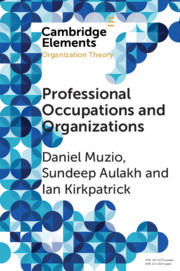Element contents
Professional Occupations and Organizations
Published online by Cambridge University Press: 20 December 2019
Summary
Keywords
Information
- Type
- Element
- Information
- Series: Elements in Organization TheoryOnline ISBN: 9781108804318Publisher: Cambridge University PressPrint publication: 16 January 2020
References
Accessibility standard: Unknown
Why this information is here
This section outlines the accessibility features of this content - including support for screen readers, full keyboard navigation and high-contrast display options. This may not be relevant for you.Accessibility Information
- 27
- Cited by
